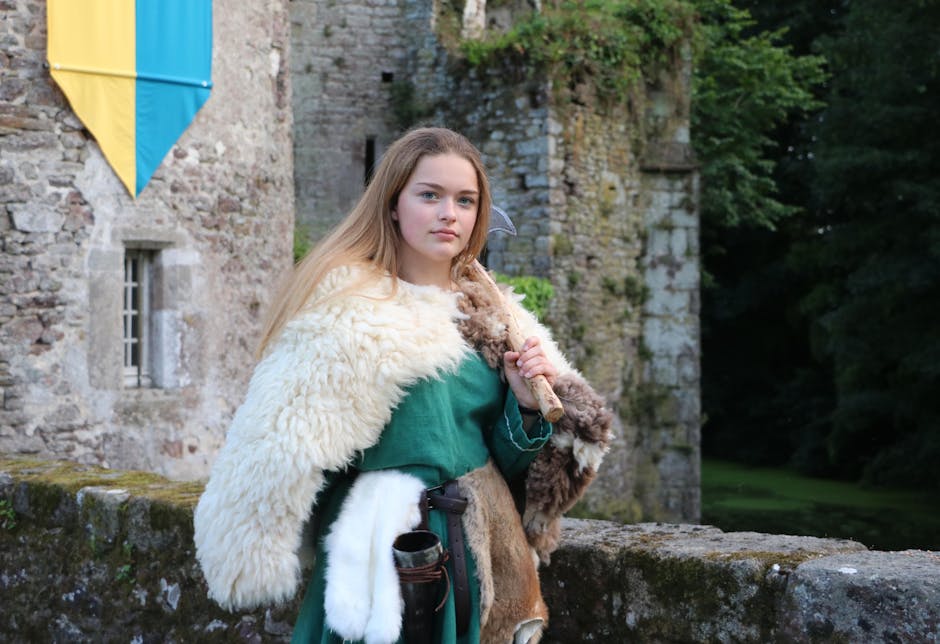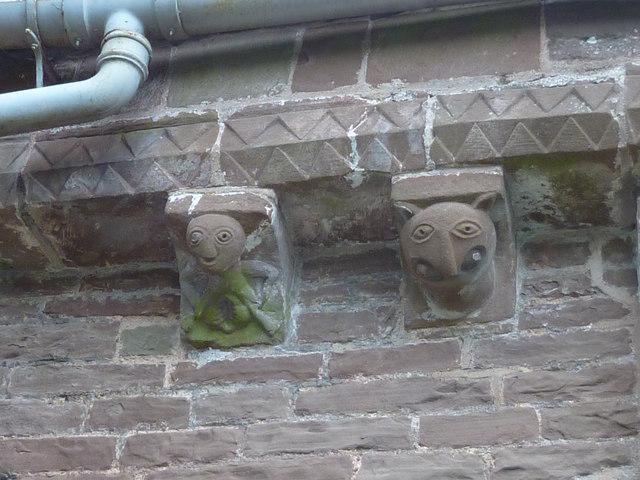Character Tropes in Medieval Literature
Women in medieval literature often appeared as symbolic figures, embodying societal ideals or warnings. The Virgin Mary was the epitome of this, offering a blueprint for piety. Her purity and obedience established a high standard, influencing how women were perceived and portrayed. Una from The Faerie Queene exemplifies this, trailing alongside the hero, her virtue as bright as snow.
The Mother existed as a nurturing figure, selflessly supporting her family. Her role mirrored real-life expectations for women to prioritize familial duties.
The Witch stood as a symbol of rebellion and forbidden knowledge. In literature, witches were the antithesis of The Virgin, wielding a sense of agency that was rare for women. They weren't merely evil; they used intelligence and intimidation to stand apart.
The Whore trope capitalized on societal fears and often exaggerated female sexuality as dangerous or deceitful. These women became cautionary tales, symbolizing fears of women's independence.
While women in these texts often fell into these archetypes, it doesn't paint the full picture. Medieval literature sometimes defied these rigid categories, allowing for more dynamic representations. These figures were intricate, and though they often reinforced societal norms, they sometimes challenged them too.

Medieval Ideals of Womanhood
Medieval society's vision of ideal womanhood was deeply steeped in religious symbolism, presenting expectations around piety, purity, and submission. The Virgin Mary transcended literal and spiritual spheres as the quintessential model of feminine virtue. Her story, enshrined in religious texts, was of a woman whose life unfolded according to divine will—a testament to obedience and sanctity.
The Virgin Mary's immaculate conception and the birth of Jesus highlighted an ideal that was both unattainable and revered. Her image blazed through medieval art and literature, where she performed the dual role of nurturing mother and steadfast believer. Her portrayal was less about her as an individual but more as a symbol—a guiding light for all women, urging them to embody selflessness, faith, and devotion to familial and divine duties.
Female saints, like St. Catherine of Alexandria or St. Cecilia, suffered torment and martyrdom, showcasing the ultimate sacrifice women could offer in the name of faith. Their stories underscored a duality—while celebrating female piety, they also reinforced the expectation of sacrifice and silence in the face of societal restraints.
These ideals functioned as both inspiration and constraint, guiding women to a path of righteousness while also limiting them with expectations that were often impossible to fulfill. Yet, even within these confines, there existed room for interpretation and resistance, as women redefined the roles ascribed to them.
Women in Medieval Daily Life
In medieval life, women occupied diverse roles that transcended the archetypal boundaries often depicted in literature. Illuminated manuscripts and other art forms offer us a glimpse into these multifaceted lives, serving as vibrant records of women's societal contributions.
Women were actively engaged in the labor force, shouldering responsibilities critical to daily life and the economy. They worked in fields during harvest, tended livestock, or crafted goods for sale at the market. These roles underscore a societal reliance on women's labor—a facet of medieval life often overshadowed in historical retellings.
Women also played a significant role as patrons of the arts. Wealthy women commissioned ecclesiastical and secular art pieces, including Books of Hours. These manuscripts, personalized with portraits of their female owners, reveal a complex dialogue between piety, personal expression, and social standing. They provided women with a canvas for self-representation and artistic expression.
In these artistic endeavors, the lives of medieval women gain color and depth. The imagery within illuminated manuscripts frequently depicts women in prayer, yet such portrayals often emphasize the wealth, influence, and agency possessed by the female patron. Women who financed these detailed artistic endeavors were not silent observers of culture but active creators and curators.
Thus, the roles of women in medieval daily life tell stories of resilience, agency, and artistic influence. While history might have imposed certain ideals upon them, these women asserted their presence and redefined the possibilities within their historical context.
Gender Representation in Medieval Art
In medieval art, the depiction of gender and femininity reflects societal views and hierarchies, entrenched in both religious and secular contexts. Art of this era frequently mirrored and reinforced gender roles, yet it also provided a platform for both subjugation and subtle subversion of these roles.
In religious settings, women were predominantly showcased through the venerated figures of saints and the Virgin Mary. These portrayals played a significant role in shaping the cultural paradigm, portraying women as paragons of virtue and piety. The Virgin Mary was a focal point, her serene visage guiding women to embody similar virtues. However, even within these constraints, there existed nuanced stories—Mary was not just a passive symbol; she was portrayed as a powerful intercessor.
Medieval art didn't shy away from using imagery to warn against transgressions and perceived moral failings. Eve, often depicted alongside Mary in medieval triptychs and illuminated manuscripts, stood as a stark counterpoint—her role in the biblical account of original sin perpetuating the notion of women as inherently susceptible to temptation.
In the secular sphere, gender roles in medieval art sometimes allowed for a broader interpretation of femininity. Portraits of noblewomen unveiled personal power and influence, not merely through depiction of their physical beauty but through the gravitas of their attire and status symbols.
Courtly love illuminated another facet of femininity. Within tapestries and manuscript illuminations, the romanticized ideals allowed women a form of agency, albeit in a highly idealized, chivalric form.
The impacts of these artistic depictions on medieval society were profound, crafting stories that both constrained and, at times, liberated gender expression. Medieval art offers enduring insights into the human spirit's negotiation with imposed roles and the timeless quest for self-expression amidst cultural constructs.
Erotic and Queer Imagery in Medieval Art
Medieval art often held within its boundaries echoes of a world woven together by sacred mystery, societal norms, and surprisingly, explorations into the sensuous and the queer. These layers of representation challenge preconceived notions of the Middle Ages as a time bound entirely by rigid morality and piety.
Take the peculiar depictions of Christ's wounds, for instance. These images, found in devotional manuscripts, extend beyond mere representations of physical sufferings endured. Some scholars have posited that the portrayal of these wounds approached an intimate and sensual quality. The artwork captures wounds as almost vulva-like, inviting contemplation not just of Christ's physical pain, but of a form of life-giving reminiscent of female reproduction.
This intersection of sacred and sensual imagery invites exploration of medieval art's story on queer and gender-fluid interpretations. Could Medieval art be subtly asserting an acknowledgment of fluidity in gender and divinity, suggesting a queer reading of a figure traditionally set apart as purely masculine?
Further stretching these bounds of traditional gender expression are the Sheela na gigs, enigmatic stone carvings who boldly display exaggerated vulvas. Found on medieval churches and castles across Europe, these provocative figures seem to defy the period's expected reverence and modesty. Functioning both as guardians against evil spirits and intriguing provocateurs, they evoke a tantalizing contradiction—an iconography that straddles both protection and exposure.
The erotic and queer implications of these works suggest a medieval society more nuanced in its acceptance, or at least its exploration, of gender and sexuality than typically assumed. They hint at an undercurrent of intermingled norms and deviations, subtly inscribing its art with notions of fluidity and existence beyond binary constraints.
Thus, medieval art invites us into a dialogue about how humanity has consistently grappled with the self's undertones amid societal confines. It opens the way for richer discoveries about Europe's past and its intricate accounts of gender and humanity's eternal quest to artistically align the earthly with the divine.

Medieval literature and art offer a window into the societal norms and roles that shaped perceptions of gender and identity. By examining these depictions, we gain insight into the interplay between tradition and individuality, revealing how historical accounts continue to influence our understanding of gender and expression today.
- Easton M. Feminism. Studies in Iconography. 2012;33:99-112.
- Dressler R. Gender Studies in Medieval Art. In: Hourihane C, ed. The Grove Encyclopedia of Medieval Art and Architecture. Oxford University Press; 2012:646-649.
- Caviness M. Feminism, Gender Studies, and Medieval Studies. Diogenes. 2010;57(1):30-45.
- French K. Genders and Material Culture. In: Bennett JM, Karras RM, eds. The Oxford Handbook of Women and Gender in Medieval Europe. Oxford University Press; 2013:197-212.
- Lindquist S. Gender. Studies in Iconography. 2012;33:113-130.























